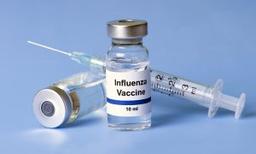
‘Potent Neurotoxin’ Thimerosal Is Still Used in Some Flu Vaccines, Scientist Says
Removal of mercury from U.S. vaccines was recommended over two decades ago, yet some flu vaccines contain up to 25 micrograms of thimerosal.


9/19/2023
Updated:
9/22/2023PrintX 1
0:00
More than two decades ago, a little-known mercury-based product, thimerosal, was approved by the Food and Drug Administration to be used as a vaccine preservative. Since then, many parents and scientific studies have questioned whether it is responsible for the current epidemic of neurological and developmental disorders, such as learning disabilities and autism.
In July 1999, U.S. health agencies and the American Academy of Pediatrics (pdf) reduced or eliminated thimerosal from vaccines as a “precautionary measure.”
Yet up to 25 micrograms of thimerosal remain in several versions of the influenza vaccines recommended this flu season, including those administered to pregnant women, infants, and children, and it is still present in some multi-dose vial vaccines, despite hundreds of studies showing thimerosal is harmful.
RELATED STORIES
Don’t Fall for the CDC’s Outlandish Lies About Thimerosal
11/23/2018

The Association Between Thimerosal Exposure and Tics
1/12/2018

“The CDC created the illusion that they were removing thimerosal from vaccines between 2001 and 2003 through the voluntary phase-out of its use as a preservative in the HepB, HiB, and DTaP vaccines. However, it was reintroduced into the prenatal/infant/child vaccination schedule via the flu shot at the same time,” Brian Hooker, chief scientific officer at Children’s Health Defense, who holds a doctorate in biochemical engineering, told The Epoch Times in an email.
“In 2004, the CDC indicated that the mercury-containing flu shot could be given during any trimester of pregnancy, meaning that the developing embryo/fetus could be exposed to 25 micrograms of mercury,” he said.
What is Thimerosal?
Thimerosal is an organic mercury compound used since the 1930s as a vaccine preservative. It is approximately 50 percent mercury by weight and produces ethylmercury as a metabolite. This metabolite then changes to inorganic mercury in the body and accumulates primarily in the brain and kidneys.
According to the Environmental Protection Agency (EPA), mercury is a naturally occurring chemical element found in rock in the earth’s crust. In its various forms, mercury is highly toxic, and exposure can harm the brain, heart, kidneys, lungs, and immune system. Yet thimerosal present in vaccines is considered safe, according to U.S. health agencies.
































